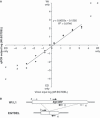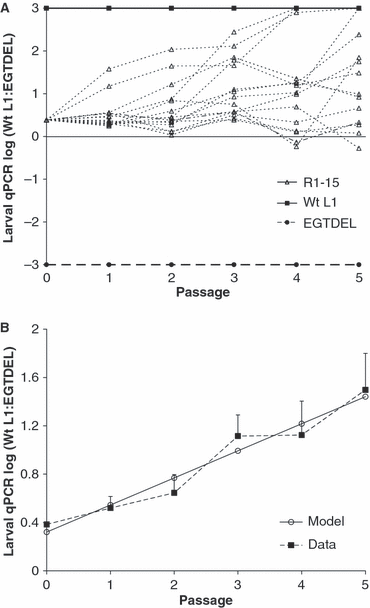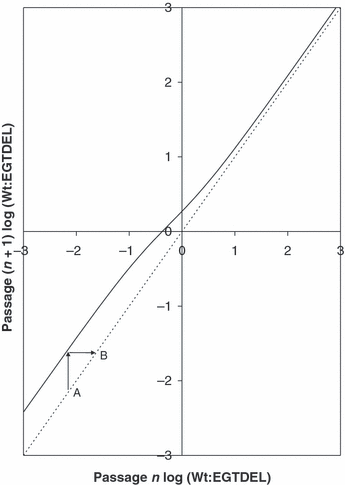Mixed infections and the competitive fitness of faster-acting genetically modified viruses
- PMID: 25567862
- PMCID: PMC3352374
- DOI: 10.1111/j.1752-4571.2008.00058.x
Mixed infections and the competitive fitness of faster-acting genetically modified viruses
Abstract
Faster-acting recombinant baculoviruses have shown potential for improved suppression of insect pests, but their ecological impact on target and nontarget hosts and naturally occurring pathogens needs to be assessed. Previous studies have focused on the fitness of recombinants at the between-hosts level. However, the population structure of the transmission stages will also be decided by within-host selection. Here we have experimentally quantified the within-host competitive fitness of a fast-acting recombinant Autographa californica multicapsid nucleopolyhedrovirus missing the endogenous egt gene (vEGTDEL), by means of direct competition in single- and serial-passage experiments with its parental virus. Quantitative real-time PCR was employed to determine the ratio of these two viruses in passaged mixtures. We found that vEGTDEL had reduced within-host fitness: per passage the ratio of wild type to vEGTDEL was on average enhanced by a factor of 1.53 (single passage) and 1.68 (serial passage). There is also frequency-dependence: the higher the frequency of vEGTDEL, the stronger the selection against it is. Additionally, the virus ratio is a predictor of time to host death and virus yield. Our results show that egt is important to within-host fitness and allow for a more complete assessment of the ecological impact of recombinant baculovirus release.
Keywords: agriculture; baculovirus; egt; experimental evolution; genetically modified organisms; host parasite interactions; population ecology.
Figures







References
-
- Ben-Ami F, Mouto L, Ebert D. The effect of multiple infections in the expression and evolution of virulence in a Daphnia-endoparasite system. Evolution. 2008;62:1700–1711. - PubMed
-
- Bonsall MB, O'Reilly DR, Cory JS, Hails RS. Persistence and coexistence of engineered nucleopolyhedroviruses. Theoretical Population Biology. 2005;67:217–230. - PubMed
-
- Burden JP, Hails RS, Windass JD, Suner MM, Cory JS. Pathogenicity, virulence and productivity of a baculovirus expressing the itch mite toxin Txp-1 in second and fourth instar Trichoplusia ni. Journal of Invertebrate Pathology. 2000;75:226–236. - PubMed
-
- Christou P, Capell T, Kohli A, Gatehouse JA, Gatehouse AMR. Recent developments and future prospects in insect pest control in transgenic crops. Trends in Plant Science. 2006;11:302–308. - PubMed
LinkOut - more resources
Full Text Sources

